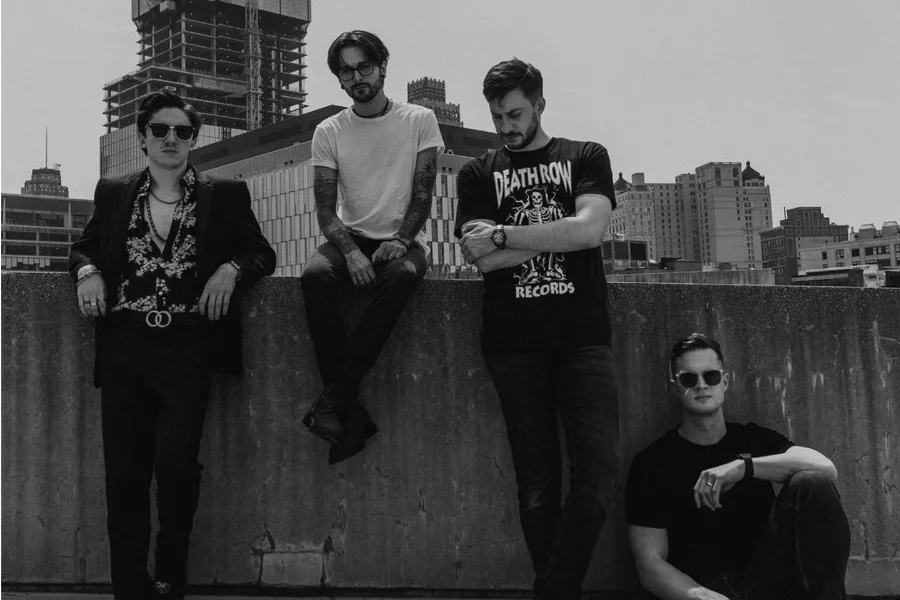From rampaging bikers at the Rolling Stones’ infamous Altamont show in 1969 to deadly stampedes by fans of the Who and Pearl Jam, the most notorious rock concert tragedies have generally been linked to the biggest names in the business.
That is, until Great White took the stage of a tiny Rhode Island nightclub Thursday night.
The heavy metal “hair” band, which reached the brief apex of its career in the 1980s, will now be forever remembered for a devastating fire that stands in a class by itself as the deadliest episode in the annals of rock ‘n’ roll mayhem.
During its performance at a club called the Station in West Warwick, Rhode Island, the band’s pyrotechnic display sparked a blaze that swept through the one-story building in minutes, killing at least 95 people and leaving more than 180 injured.
“This is far and away the biggest tragedy in rock history,” said Billboard magazine senior editor Ray Waddell, who has covered rock tours for 17 years. “It transcends rock and roll to become just an American tragedy, a human tragedy.”
He added: “Great White will no doubt live in infamy. So will this tiny club.”
The fire heightened concerns about crowd safety at large public gatherings, coming as it did just four days after 21 people were killed in a stampede at a Chicago nightclub when they tried to escape pepper spray and were crushed behind blocked doors.
Still, industry observers said rock concerts, on the whole, remain relatively safe given their frequency and the size of the crowds they draw. And loss of life is very rare.
“It doesn’t happen that often,” said Gary Bongiovanni, editor of the concert industry magazine Pollstar.
“We’re talking about hundreds of club concerts every night, coast to coast, or worldwide,” Waddell said. “It’s an extreme rarity to have something like this, and nothing to this degree.”
While previous rock music fiascoes may overshadow the ill-fated Great White show in terms of name recognition, nothing before even comes close as far as casualties go.
One of the most notorious incidents occurred during a free concert by the Rolling Stones at the Altamont Speedway near San Francisco in December 1969.
One fan was stabbed to death and many others were beaten with pool cues by members of the Hells Angels biker club who were put in charge of security for the event. The violence was captured on film for the documentary “Gimme Shelter.”
A decade later in 1979, 11 people were killed before a Who concert at the Riverfront Coliseum in Cincinnati when a crowd surged forward to grab the best seats. Until this week, that tragedy had stood as the deadliest in rock history.
Similarly, nine fans were crushed to death during an open-air Pearl Jam concert at the Roskilde Festival in Denmark on June 30, 2000, as fans charged the stage.
In Europe, where open-air festivals are annual summer rituals, individual concert-goers are often rendered helpless by the force of thousands of heaving bodies pressed against each other. A 16-year-old girl was crushed to death at a Smashing Pumpkins show in Ireland in 1996. And surging crowds during a Limp Bizkit performance at the Big Day Out music festival in Australia in January 2001 left one girl dead of an apparent heart attack and several others hospitalized.
Rowdy fans also have been known to go out of their way to cause trouble on occasion, as when hundreds of concert-goers rioted at the close of the 30th-anniversary Woodstock festival in July 1999, setting fires, tearing down speaker towers and looting souvenir stands before police restored order. Several people were injured, but none severely.
The original Woodstock in 1969, in contrast, prided itself for being an entirely peaceful event – “three days of peace and music.”
Gate-crashing has been a problem at times. Thousands of fans without tickets crashed Britain’s Glastonbury festival in 2000, swelling crowd numbers to dangerous levels. Organizers canceled the event the following year for safety concerns.
Still, serious incidents are relatively rare, given the frequency of concerts in venues of every size every day, experts said.
“In terms of activities one can engage in, rock concerts are one of the safest things you can do,” Waddell said.
Bongiovanni said larger tours, held at arenas, convention centers and stadiums, are generally professionally managed and tightly regulated for safety, fire codes and crowd control.
“The people who are actually running the show and operating the building are safety-conscious and have enough experience to adequately manage a public event,” he said. “The problems really start occurring when you get down into some of these clubs that are a little bit under the radar.”
Smaller clubs, he said, “are not experienced with handling national acts and probably the level of production that a band like Great White would bring into a nightclub.”





























